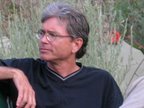Sloth is one of the
Seven Deadly Sins. The effort required to be virtuous, to serve God, is avoided by the slothful, thus we have the sin. I think sloth has gotten a bad rap from this sort of illogic. Why can't we cultivate virtue slowly and carefully, like we cultivate imagination or creativity? "Sloth"
comes from "slow" and is as Anglo-Saxon as Geoffrey Chaucer. These days, we all want to slow down. The harried, frantic pace of life in the 21st century has us all wondering if we've missed something, forgotten something, failed to experience something, or don't know something. This social pressure to always have something or to do something works on us
ad nauseum. I say the hell with that.
Brenda Ueland, in her fine and inspirational book
If You Want to Write, says "Our idea that we must always be energetic and active is all wrong." She goes on to say "the imagination needs moodling--long, inefficient, happy idling, dawdling, and puttering." The soul, she believes, is killed by busyness, by attention only to chores and duties. To live, to love, to feel, and to grow requires a kind of anti-effort. We cannot strive to be better--we have to nurture that part of us, tease it out, guide it along. As my dear and lovely bride said to me last night, "you can't be lazy enough!"






